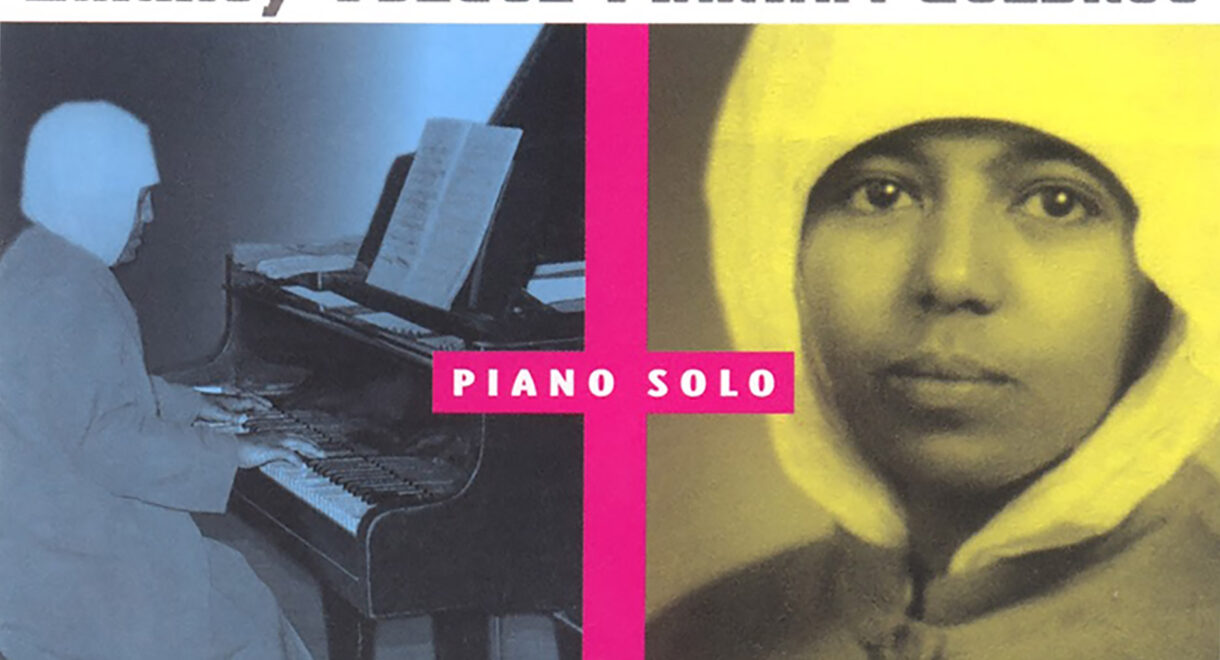Watch John Peel’s Channel 4 TV series ‘Sounds of the Suburbs’ series featuring Aphex Twin, Robert Wyatt, Luke Vibert, and more! “This is how I shall die, incidentally: […]
Celebrating Conlon Nancarrow’s Impossible Music for Player Piano

The late Mexico City composer’s recordings move like Autechre and Aphex Twin tracks.
Before MIDI or the 808, before Ableton, before the first home computers, an Arkansas-born, Mexico City based iconoclast named Conlon Nancarrow was crafting chords and clusters, programming them into music, and hitting the Play button. Instead of circuits and chips, though, the composer was working with scrolls, a hole-puncher, and a player piano.
What he was doing is easier to show than to tell. Below is one of Nancarrow’s works, which was designed to be played by setting a scroll into place and letting the piano do the rest. It was uploaded by the late Jürgen Hocker, who owned a Ampico Bösendorfer player piano that was restored under Nancarrow’s supervision.
Among the first composers of “computer” music, Nancarrow, who died in 1997 at age 84, in essence wrote basic “software” programs for his 88-keyed, self-running hardware. That was no small feat in the late 1940s and early ‘50s. Then a struggling, untrained composer based in Mexico City, Nancarrow realized his idea while visiting New York: If he had a hole-punching machine, he could compose work that utilized the keys in ways impossible by human hands. He recalled the moment to the critic Kyle Gann in the 1995 book The Music of Conlon Nancarrow.
I was walking through the Village, and there was a shop there, run by a weird guy who repaired old instruments, lutes, and all kinds of Baroque and Renaissance instruments. I started talking to him, and I happened to mention that I was looking for someone who could copy a roll punching machine. He didn’t know anything about it, but by coincidence he had a friend who had a machine shop, who was an absolutely accurate metal worker. And I got him to go up to the Bronx with me and look at this machine and take all the measurements. And he made that. It took quite a while, about a month. When I got to Mexico and started using it, right away I saw all kinds of limitations and things that had to be changed. Also luckily, I found this fantastic mechanic in Mexico who rebuilt that machine… The original was just a little, basic thing. He fixed it up to where I could do all kinds of things. That machine is still holding up beautifully.
Heard from a certain angle, the seeds of Autechre and Aphex Twin are within Nancarrow’s player piano recordings – the way stuff happens that isn’t humanly possible and performed in ways that don’t feel quite right. From the start, Nancarrow faced pushback, ridicule and dismissal for his experiments, which he called “Studies for Player Piano.” The work was criticized for its mechanical, nonhuman nature. The composer rejected the critiques, telling Gann that he was “amazed that most people who object to the nonhuman element in computer music or in the player piano have no objection to a Shakespeare sonnet, for example. That sonnet has always remained the same over the centuries. No one suggests it should be changed by a new performance. A painting stays the same forever. The same is true of other works of art. But somehow music is supposed to be different all the time.”
Like Autechre’s music, Nancarrow’s stuff is tough to crack on first (and second, and third) listen. As in-your-face as industrial or punk music, the works seem to negate the notion of melody, harmony and structure. He uses the keys like they’re drums, tapping out impossible rhythms and oblique chords, banging and clanging one moment and moving into gentle, spacious territory the next.
Though his work was appreciated in new music circles, it was more aligned with the kind of stuff in Nancarrow’s record collection than in the classical music repertoire. According to Hocker, his collection contained “a huge amount of ethnic music, from Africa, India, Bali, Sumatra, China, Java, Haiti, Brasilia, Cuba and so on. Than an impressive collection of Jazz with Louis Armstrong, Bessie Smith and Jelly Roll Morton. And nearly no recordings from the 19th century music – but music from the 17th, 18th and 20th century.”
You can hear all of that stuff in recordings of Nancarrow’s work released by Wergo Records. Recorded at the artist’s Mexico City studio and rehearsal space on his 1927 Ampico player piano, the Studies for Player Piano series is a rich introduction to Nancarrow’s singular world. Those looking for vinyl should track down his work for Arch 1750 Records, which isn’t tough to find. In 2006, the German classical label Musikproduktion Dabringhaus Und Grimm recorded the composer’s work anew using an Ampico player piano designed to Nancarrow’s specifications. Which of these recordings you find shouldn’t matter. Just as a Shakespeare sonnet is the same despite where it’s published, Nancarrow’s recordings sound precisely, wonderfully identical regardless of source.










